
New York City has long been a breeding ground for creativity, and its streets serve as the canvas for a vibrant and ever-evolving community of street artists. These talented individuals use public spaces to express their thoughts, emotions, and ideas through visually stunning works of art. From graffiti and murals to installations and sculptures, the streets of New York are alive with creativity and beauty.
What sets New York street artists apart is their ability to capture the essence of the city and its diverse population. Through their art, they offer a unique perspective on the urban landscape and the issues that define the city. Whether it’s a social or political commentary, a celebration of cultural diversity, or simply an expression of artistic brilliance, these street artists leave an indelible mark on the city and its inhabitants.
One of the most iconic street artists in New York is Banksy. Known for his thought-provoking and often controversial stencils, Banksy’s work can be found on walls and buildings throughout the city. His art challenges conventions and forces viewers to question the status quo. Other notable street artists in New York include Shepard Fairey, who gained worldwide recognition for his “Obey” campaign, and Swoon, whose intricate wheatpaste creations have adorned the city’s walls for years.
This article will provide a comprehensive look at the diverse and talented community of street artists in New York City. We will explore their art, their inspirations, and the impact they have on the city’s cultural landscape. Join us on this journey through the vibrant and captivating world of New York street art.
Street art has a rich and diverse history that dates back to ancient times. Throughout history, individuals have used public spaces to express their creativity, convey messages, and challenge societal norms. The roots of street art can be traced back to ancient civilizations, where murals and graffiti were used as a means of communication and self-expression.
In modern times, street art gained popularity in the late 20th century as a form of artistic expression and social commentary. Emerging in urban areas, street artists began transforming public spaces with their creativity. They utilized a variety of materials and techniques, ranging from spray paint and stencils to wheatpasting and installations.
Graffiti as a Form of Street Art
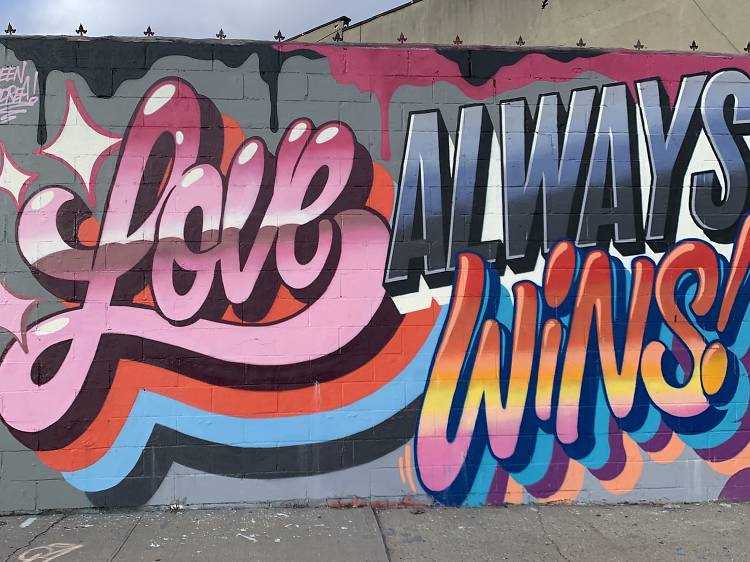
Graffiti played a significant role in the development of street art. Originating in the 1970s, graffiti artists began tagging their names and personal symbols on walls, trains, and other surfaces. The underground nature of graffiti led to its association with rebellion and illegal activities. However, as time progressed, graffiti evolved into a respected art form that influenced street artists worldwide.
Evolution and Influence
Street art continued to evolve in the 1980s and 1990s, with artists like Keith Haring and Jean-Michel Basquiat gaining recognition for their works. Their unique styles and bold statements paved the way for future generations of street artists.
Today, street art has become an integral part of urban culture, with cities around the world embracing it as a form of artistic expression and revitalization. Street art festivals and exhibitions showcase the talent and diversity of street artists, allowing them to connect with audiences from all walks of life.
| Year | Event |
|---|---|
| 1970s | Graffiti art emerges in New York City |
| 1980s | Keith Haring and Jean-Michel Basquiat gain recognition |
| 1990s | Street art continues to evolve and gain popularity |
Evolution of Street Art in New York
The evolution of street art in New York City has been a fascinating journey, showcasing the creativity and expression of artists from diverse backgrounds. From the early days of graffiti in the 1960s and 1970s, to the rise of muralism in the 1980s and 1990s, to the present day’s vibrant street art scene, New York has been a hub for innovative and groundbreaking artwork.
Graffiti: The Birth of Street Art
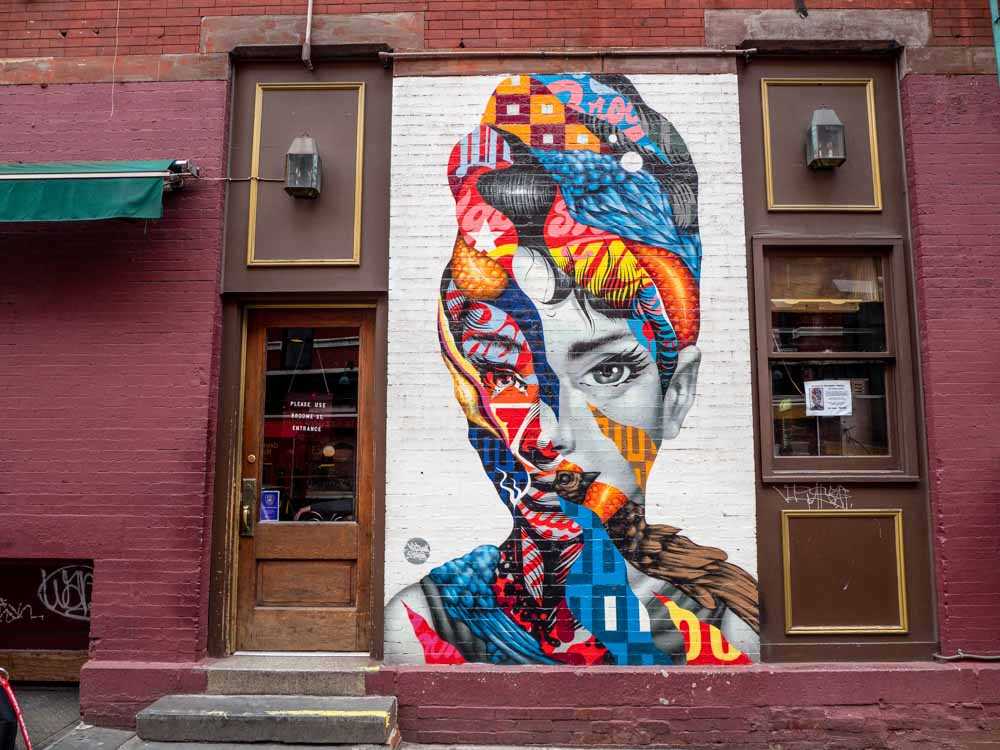
In the 1960s and 1970s, graffiti emerged as the first form of street art in New York City. Initially considered vandalism, graffiti quickly became a means for marginalized communities to express themselves and reclaim public spaces. Writers, or graffiti artists, would spray paint their signature tags or elaborate pieces on subway cars and buildings, often risking their lives to create art that represented their identities and experiences.
Over time, graffiti evolved into different styles and forms, with artists experimenting with new techniques and materials. Wildstyle graffiti, characterized by intricate, interlocking letters, and vibrant colors, became a popular style in the 1980s.
Muralism: Art in Public Spaces
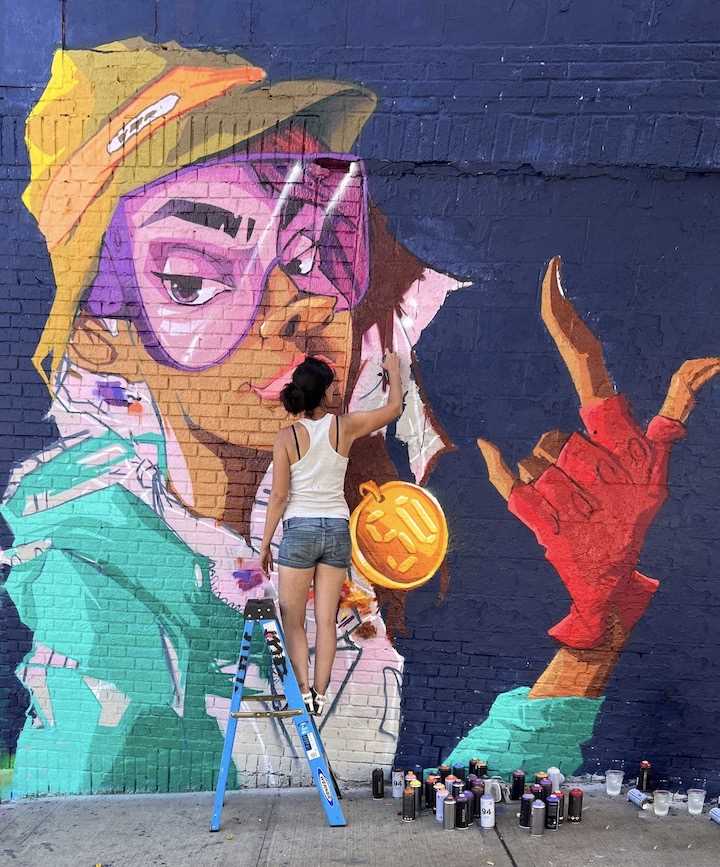
In the 1980s and 1990s, muralism gained prominence as a form of street art in New York City. Muralists sought to create large-scale, visually striking pieces that transformed blank walls into public canvases. With their powerful imagery and social messages, murals became a vehicle for communication and activism.
This period witnessed notable artists like Keith Haring and Jean-Michel Basquiat, who used their murals to address socio-political issues and challenge the status quo. Their works became iconic symbols of the city’s art scene and inspired a new generation of artists.
Muralism also saw the emergence of community-oriented art projects, where artists collaborated with local residents and organizations to create murals that reflected the diversity and spirit of their neighborhoods.
The Modern Street Art Scene
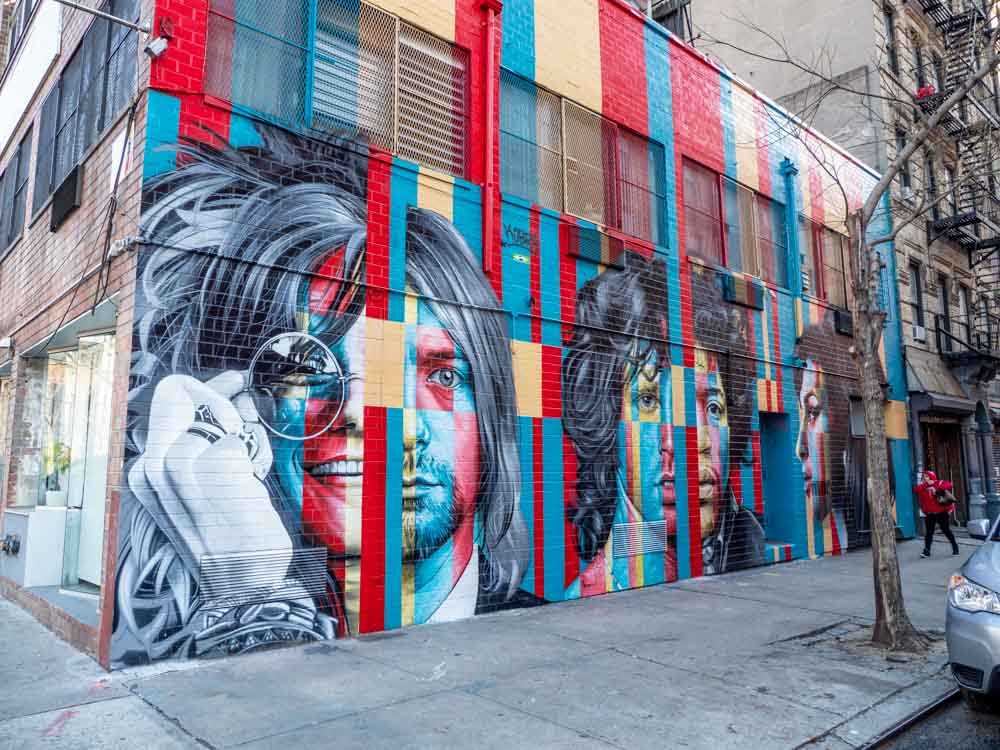
Today, New York’s street art scene continues to evolve and push boundaries. Artists have expanded their repertoire beyond graffiti and murals, incorporating stencils, paste-ups, installations, and more. The city’s streets have transformed into open-air galleries, where artists showcase their distinctive styles and perspectives.
Street art has also gained recognition and commercial success, with artists like Banksy and Shepard Fairey achieving international acclaim. Their works command high prices at galleries and auctions, blurring the lines between street art and the traditional art world.
Key Artists in the Evolution of Street Art in New York
| Artist | Period | Signature Style |
|---|---|---|
| Keith Haring | 1980s | Bright, bold figures and symbols |
| Jean-Michel Basquiat | 1980s | Abstract and expressive |
| Banksy | 2000s-present | Stencil art with social and political commentary |
| Shepard Fairey | 2000s-present | Iconic portraits and propaganda-style imagery |
The evolution of street art in New York City reflects the city’s vibrant cultural landscape and the importance of public spaces as platforms for artistic expression. As new artists continue to emerge and push boundaries, the legacy of street art in New York will undoubtedly continue to grow and inspire generations to come.
Famous New York Street Artists
New York City is known for its vibrant street art scene, with countless talented artists leaving their mark on the city’s walls. Below is a curated list of some of the most famous New York street artists and their unique contributions to the urban art world.
| Artist | Signature Style |
|---|---|
| 1. Banksy | Banksy is a renowned anonymous graffiti artist known for his politically charged and thought-provoking stencil artworks that often critique societal issues. |
| 2. Keith Haring | Keith Haring was an influential artist known for his bold and energetic drawings that often depicted themes of love, unity, and activism. |
| 3. Jean-Michel Basquiat | Basquiat was a prolific painter and graffiti artist known for his expressive and raw imagery that combined elements of street art, pop culture, and African influences. |
| 4. Shepard Fairey | Shepard Fairey is an American street artist best known for his iconic “Obey” stickers and the Barack Obama “Hope” poster, which became a symbol of the 2008 presidential campaign. |
| 5. Lady Pink | As one of the few prominent female street artists in the 1980s, Lady Pink made a name for herself with her vibrant graffiti pieces that often featured strong female figures and social commentary. |
| 6. FUTURA 2000 | FUTURA 2000 is a legendary graffiti artist known for his abstract and futuristic style, characterized by bold, curvy lines and intricate patterns. |
| 7. Os Gemeos | Os Gemeos are Brazilian twin brothers who have gained international recognition for their visually enchanting and whimsical murals, often featuring characters with yellow skin and vibrant colors. |
These are just a few of the many talented street artists who have contributed to making New York City a global hub for urban art. Each artist brings a unique style and message to the streets, creating a visually stunning and culturally significant tapestry of artwork throughout the city.
Techniques Used by New York Street Artists
Stencil Art

One popular technique used by New York street artists is stencil art. This technique involves creating a design on a thin, flexible material such as cardboard or plastic and then cutting out the design using a sharp knife. The stencil is then placed against a wall, and spray paint is applied over it to create the desired image. Stencil art allows for precise and detailed designs, making it a favorite among many street artists.
Mural Painting
Mural painting is another technique commonly used by street artists in New York. This technique involves painting large-scale images directly onto walls or buildings. Street artists often use brushes, rollers, and other tools to apply acrylic or spray paint to create their vibrant and eye-catching murals. Mural painting allows artists to transform public spaces and bring their art to a larger audience.
Tip: Many street artists in New York collaborate with building owners or organizations to obtain permission to create murals on specific walls. This collaboration helps foster relationships and ensures that the artwork is legal and respected within the community.
Wheatpasting
Wheatpasting is a technique that involves applying a mixture of wheat flour and water, or commercial wallpaper paste, to attach posters or prints to walls. Street artists often use this technique to display their art or share political messages. The wheatpaste mixture acts as an adhesive, allowing the artwork to be easily attached to any surface. Wheatpasting is a temporary form of street art, as the posters or prints may be removed or weathered over time.
Note: While some street artists engage in illegal graffiti, it is important to recognize that many artists work within legal boundaries and seek permission from property owners or city officials to create their art. Respect for private property and collaboration with communities are crucial aspects of street art culture in New York.
Impact of Street Art on New York City
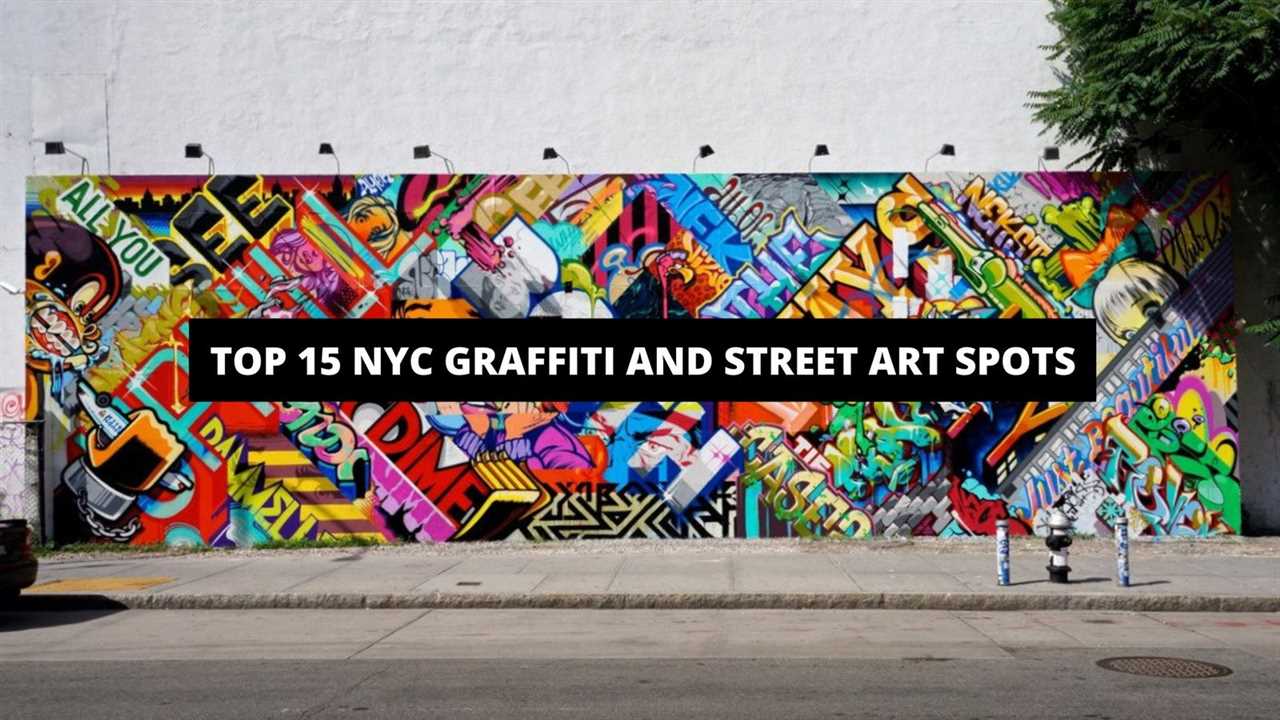
Street art has had a profound impact on the cultural landscape of New York City, contributing to its vibrant and diverse artistic scene. This form of art allows artists to express their creativity and make powerful social and political statements in public spaces.
1. Cultural Enrichment
The presence of street art adds depth and character to the city’s neighborhoods, turning them into open-air museums. Murals and graffiti pieces can be found on buildings, walls, and even sidewalks, creating a visual tapestry that reflects the city’s dynamic and ever-changing nature.
These public art installations often depict the city’s history, iconic figures, or address current social issues. They invite residents and visitors alike to engage with the art and consider its meaning, fostering a sense of cultural enrichment and dialogue.
2. Empowerment and Expression
Street art provides a platform for artists to express themselves and share their perspectives with a wider audience. It offers a sense of empowerment, as artists can bypass traditional art institutions and showcase their work directly to the public.
Through their art, street artists often highlight social injustices, challenge the status quo, and give a voice to marginalized communities. By utilizing public spaces, they reclaim these areas, making them inclusive and accessible to everyone.
Moreover, street art has played a role in revitalizing neglected areas of the city. Mural festivals and art events have transformed underutilized spaces, attracting tourism and economic activity to these once-overlooked neighborhoods. This injection of creativity and vibrancy has led to the redevelopment and rejuvenation of these areas.
While street art may face certain controversies and legality issues, its impact on the city cannot be denied. It has become an integral part of New York City’s cultural fabric, inspiring creativity, promoting dialogue, and transforming the urban landscape.
Controversies Surrounding Street Art in New York
Street art has always been a controversial form of expression in New York City. While some view it as a valuable form of artistic expression that adds vibrancy and creativity to the urban landscape, others see it as vandalism and a blight on the city’s infrastructure. The contentious nature of street art has sparked numerous debates and controversies throughout the years.
Property Rights
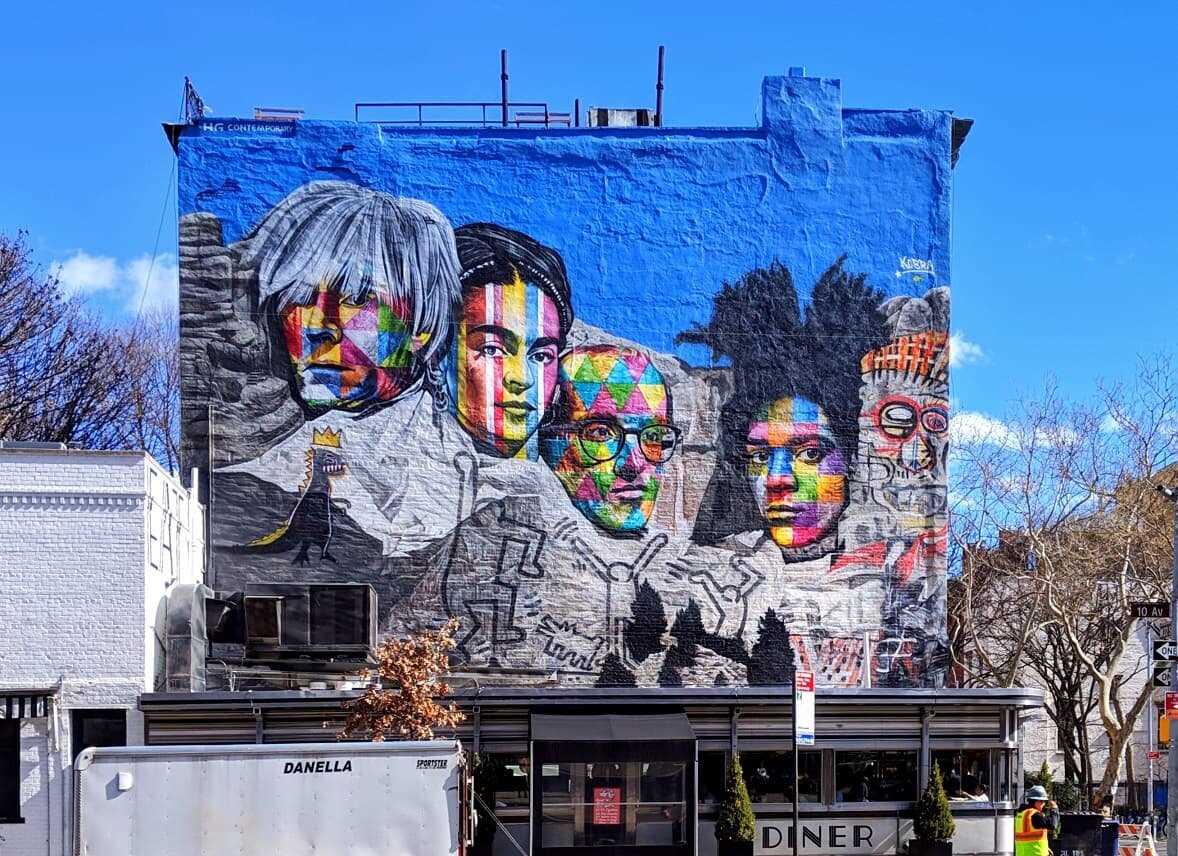
One of the main controversies surrounding street art in New York is the issue of property rights. Many street artists argue that they should be allowed to use public property as their canvas, as a means of self-expression and artistic exploration. However, property owners often view unauthorized street art as trespassing and vandalism, leading to legal battles and disputes over the ownership and control of public spaces.
Gentrification and Commercialization
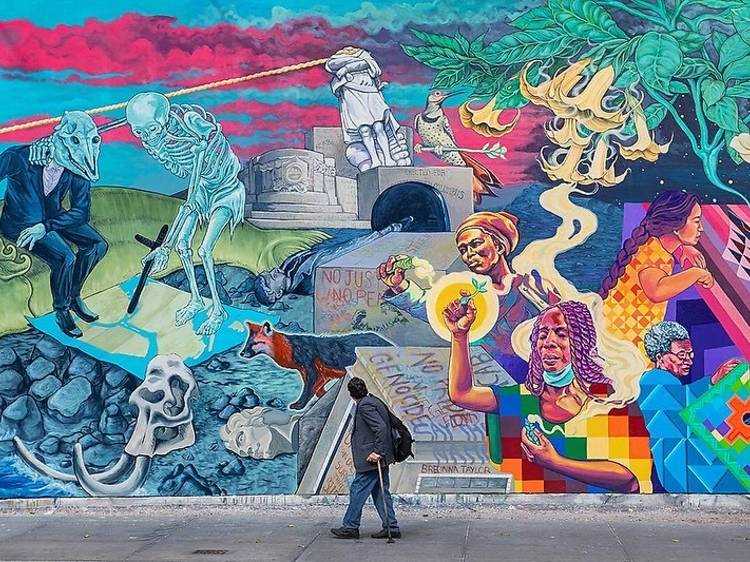
Another contentious issue is the role of street art in gentrification and commercialization. As street art becomes more popular and celebrated, it can attract tourists and gentrifying forces to previously neglected neighborhoods. Some argue that this contributes to the displacement of local residents and the loss of authentic cultural spaces. Additionally, street art has become increasingly commodified, with art dealers and collectors profiting from the sale of street art pieces, raising questions about the integrity and authenticity of the art form.
In recent years, the controversy surrounding street art has led to a number of policies and regulations aimed at regulating and controlling the practice. While some efforts have been made to provide designated spaces for street art and foster collaboration between artists and property owners, the debate continues to rage on, highlighting the complexities and challenges associated with this form of artistic expression in New York City.
Street Art Festivals in New York
New York City is well-known for its vibrant street art scene, and the city hosts several street art festivals throughout the year. These festivals provide a platform for local and international artists to showcase their talent and add to the ever-evolving landscape of street art in New York.
1. Bushwick Collective Block Party
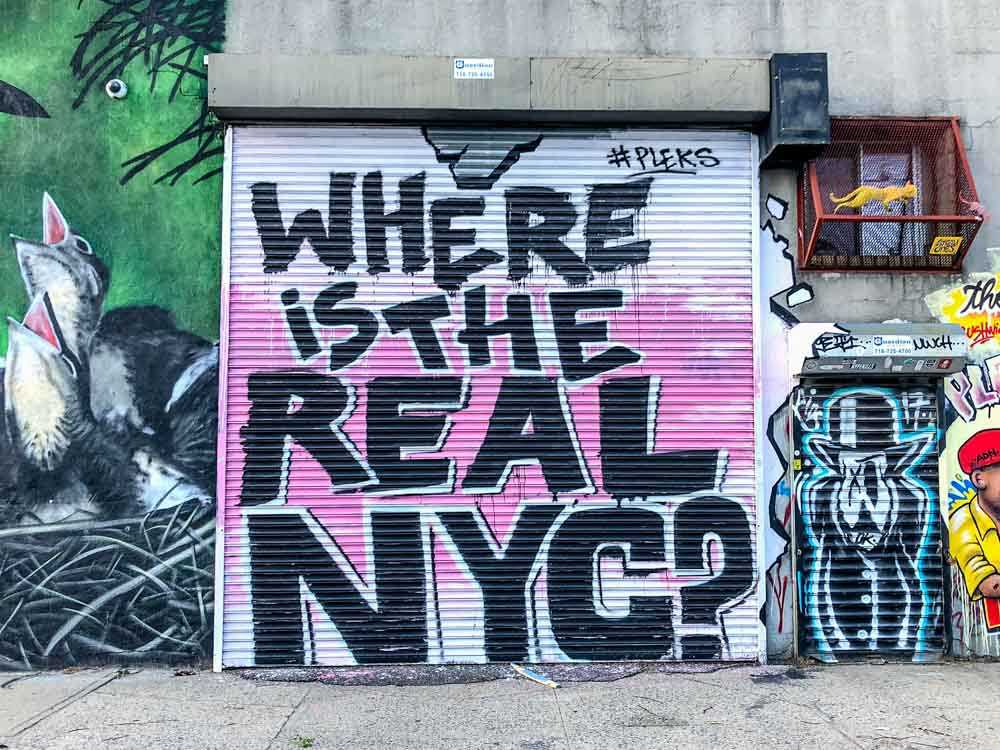
One of the most popular street art festivals in New York is the Bushwick Collective Block Party. Held in the vibrant neighborhood of Bushwick in Brooklyn, this festival brings together renowned street artists from around the world. Artists are given walls to create large-scale murals, and the result is an outdoor gallery that attracts visitors from all over.
2. Coney Art Walls
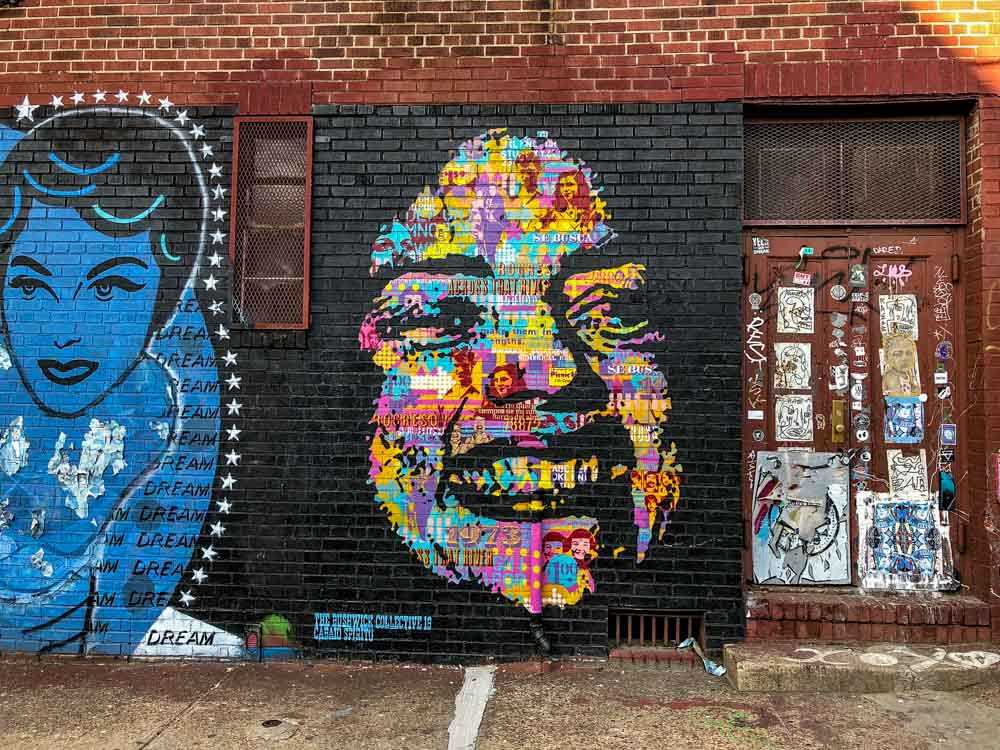
Located in the iconic Coney Island, Coney Art Walls is another must-visit street art festival. This outdoor museum showcases the work of both established and emerging street artists. Visitors can admire the colorful murals and immerse themselves in the unique atmosphere of Coney Island.
In addition to these two major festivals, there are numerous smaller events and exhibitions that take place throughout the year. These events not only bring street art to the forefront but also serve as a platform for artists to connect and collaborate.
Street art festivals in New York not only add beauty to the city’s streets but also promote creativity and self-expression. They provide an opportunity for artists to share their stories and perspectives with a wide audience, making street art an integral part of New York’s cultural landscape.
Support and Recognition for New York Street Artists
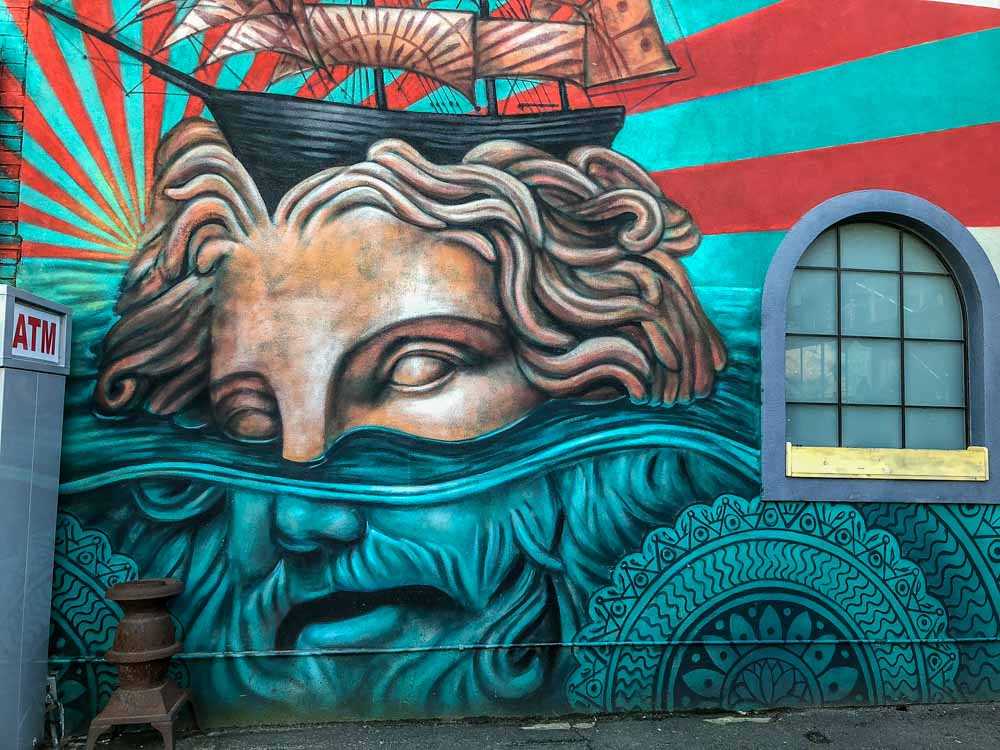
New York City has long been a hub for artistic expression and creativity. Over the years, street art has emerged as a powerful medium of self-expression and a way for artists to connect with the public in a unique and powerful way. As this art form continues to evolve, it is crucial for street artists to receive the support and recognition they deserve.
Community Support
One of the key ways in which New York street artists are receiving support is through community initiatives. Local organizations and neighborhood associations are actively working to create spaces for artists to showcase their work. These initiatives not only provide a platform for artists to display their creations but also ensure their visibility to a larger audience.
Additionally, community support helps foster a sense of belonging and identity among street artists. By encouraging participation and engagement, these initiatives are creating a strong and supportive community where artists can collaborate, share ideas, and develop new techniques together.
Legal Recognition
Another crucial aspect of support for New York street artists is the increasing legal recognition of their work. In recent years, there has been a shift in attitudes towards street art, with many recognizing it as a legitimate form of artistic expression.
City policies and regulations are being revised to accommodate street art and protect the rights of artists. Specifically designated legal wall spaces have been created, where artists can freely create and showcase their work without fear of vandalism or legal repercussions. This recognition is a significant step towards ensuring that street artists can continue to contribute to the cultural fabric of New York City.
Financial Support
Monetary support is also essential for the growth and professional development of street artists. Many organizations, both public and private, are offering grants, scholarships, and funding opportunities to support street artists in their creative endeavors.
These financial resources not only provide artists with the means to sustain themselves but also enable them to invest in art supplies, infrastructure, and tools for their work. By facilitating access to funding, New York is empowering street artists to thrive and continue pushing the boundaries of their art form.
The support and recognition for New York street artists are creating an enabling environment for them to flourish. Through community initiatives, legal recognition, and financial support, these artists are being encouraged to push the boundaries of their work and contribute to the vibrant artistic landscape of the city.
Future of Street Art in New York
Street art has become an integral part of New York City’s vibrant cultural landscape. Artists of all backgrounds have taken to the streets to express their creativity and create bold, thought-provoking works of art. But what does the future hold for street art in New York?
One thing is for certain: street art isn’t going anywhere. Despite the challenges it faces, such as legal restrictions and the transient nature of outdoor art, street art continues to thrive in New York. In fact, it has become a major attraction for tourists and locals alike, with street art tours and exhibitions popping up all over the city.
The future of street art in New York will likely see a further blurring of the lines between street art and traditional art forms. Street artists are increasingly being recognized as legitimate artists, and their works are being showcased in galleries and museums. This trend will likely continue, with street art becoming more integrated into the established art world.
Technology will also play a role in the future of street art. Artists are embracing digital tools to create interactive and immersive street art experiences. Augmented reality and virtual reality technologies will allow viewers to engage with street art in new and exciting ways. Street art festivals and events will likely incorporate these technologies to create dynamic and engaging experiences for visitors.
The future of street art in New York also hinges on public perception and policy. While some may view street art as vandalism, others see it as a vital form of expression and a way to beautify the city. As more people embrace street art and recognize its value, public sentiment and policies may change to better support and protect street artists.

I am a mural enthusiast and a fervent admirer of street art. Rather than creating murals myself, I am passionate about collecting them. My love for street art knows no bounds. I am dedicated to curating and cherishing these artworks that grace the streets. My collection stands as a testament to my profound appreciation for this form of artistic expression.
read about me



